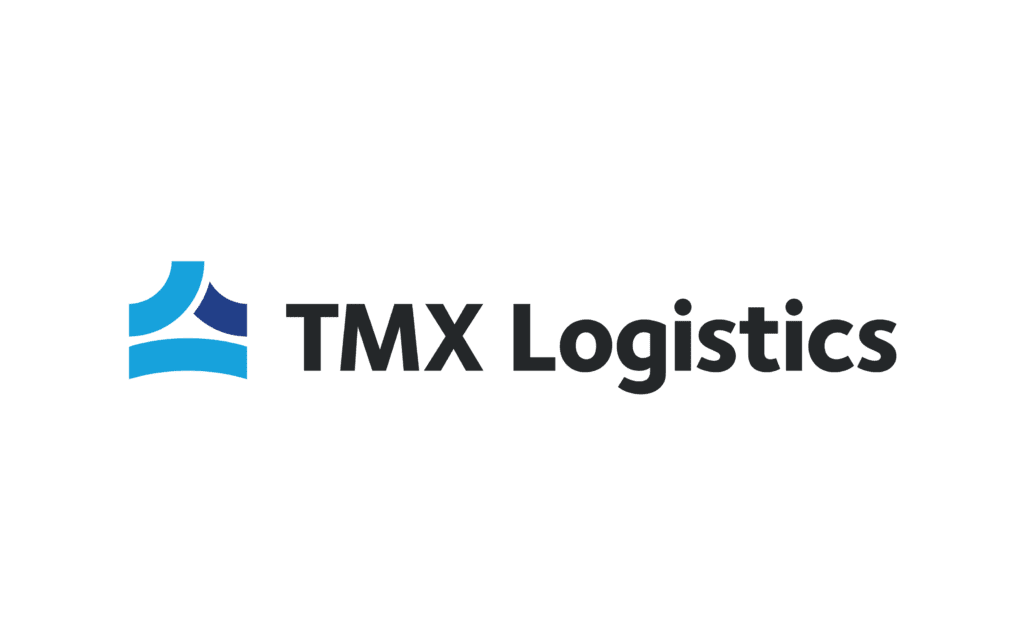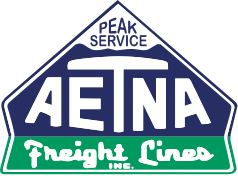Understand freight shipping prices: What drives the cost—and how to save
The price isn’t just the price
If freight quotes feel like a moving target, you’re not imagining things.
Freight shipping prices are shaped by more than weight and distance. One day, the rate looks reasonable. The next, it’s different, thanks to a fuel spike, a permit issue, or a carrier shortage in the wrong region.
At Bridgeway, we help shippers make sense of what they’re seeing. Here’s a closer look at how freight shipping prices work, what factors really move the needle, and how to keep costs in check without sacrificing quality or safety.
1. Two paths to pricing: Spot vs. contract freight
Freight shipping prices start with one key distinction: are you moving a single shipment, or are you planning for the long haul?
Spot market
Spot freight is a one-off move. A shipper has a load. A broker or carrier has capacity. They negotiate a rate and that’s that. No long-term agreements. No guaranteed rates. Spot pricing is flexible, but it can swing depending on fuel costs, carrier availability, urgency, and lane difficulty.
Contract freight (RFPs)
In contrast, contract freight is based on long-term planning. A shipper puts out a Request for Proposal (RFP) for dozens or hundreds of loads over the next year. Brokers and carriers bid with pricing that often includes a fuel surcharge and other known variables.
The advantage is predictability. The tradeoff is that you’re locked in. If market conditions shift—say, fuel drops or capacity loosens—you’re still paying the contracted rate.
Many of Bridgeway’s brokered loads are contracted. On the trucking side, about 40–60% of shipments follow this model. It’s a good fit for manufacturers and distributors with consistent freight volume.
What goes into a freight quote?
A freight quote is more than a rate per mile. Behind the number are a dozen moving parts that determine how much the shipment will cost and how well it’s protected along the way.
Here’s what most quotes take into account:
1. Pickup and delivery locations
Rates shift based on how easy it is to find a truck near your origin and destination. Major hubs usually mean lower cost. Remote towns or out-of-route stops drive it up—especially if backhaul options are limited.
2. Weight and dimensions
Heavier freight means fewer options. Larger freight can trigger specialized equipment, permits, or handling requirements. Even a few extra inches in width or height can change the quote.
3. Type of cargo
Is it palletized? Fragile? Oversized? Requires tarping or custom packaging? The more complex the load, the more involved the pricing. Some shipments also demand specific equipment—like flatbeds, Conestoga trucks, or multi-axle trailers—which affects availability and cost.
4. Fuel
For contract freight, fuel is usually included as a surcharge based on a national index. In the spot market, fuel costs are baked into the quote and fluctuate more with market trends.
5. Route challenges
Shipping through a dense metro area or into restricted zones requires more coordination and can increase costs. The more complicated the path, the higher the price.
6. One-way vs. round trip
If a carrier can’t find a return load, the cost of getting home might be factored into your quote, which is why location and flexibility matter.
Not all coverage is created equal: Why insurance (and experience) matter
Most carriers carry the industry standard: $100,000 in cargo insurance. But many shipments exceed that value. If your freight is worth more, it’s critical to confirm whether the carrier has enough coverage to protect it. You could roll the dice with someone underinsured. But if something goes wrong, the cost is on you.
Just as important? The experience of the carrier. A seasoned operator is more likely to anticipate risks, avoid damage, and handle problems professionally. Bridgeway carries higher-than-standard cargo insurance and works only with trusted, experienced partners. Your freight is protected from quote to delivery.
What surprises shippers about their final freight shipping prices
Most shippers expect the line-haul rate. What catches people off guard are the extras—the small, often overlooked fees that add up fast if no one’s paying attention.
These accessorials cover all the services and circumstances that fall outside a standard pickup and delivery.
Common examples include:
- Fuel surcharges (on RFPs)
- Permits and escorts
- Liftgate services
- Hazmat handling
- Detention
- Driver assist
- After-hours delivery
- Out-of-route miles
- Lumpers (required on-site loading/unloading staff at some facilities)
In contract shipping, these costs are usually spelled out up front. The shipper and the broker agree to a fixed rate per accessorial.
In the spot market, though, they can be easy to miss. If the fine print on a quote goes unread, those charges often show up later.
Pro tip: Don’t assume everything’s included. Ask for a full list of potential accessorials when reviewing a quote—especially for spot freight.
Region, season, and market conditions: What really affects freight shipping prices
Freight shipping prices vary not just by distance but by location, timing, and economic shifts. Some regions cost more to ship in. Some seasons drive higher demand.
Region: It’s about balance
Freight moves in lanes. When those lanes are unbalanced—lots of inbound freight, not much outbound—costs go up. It’s harder to find a return load, and someone has to pay for the empty miles.
Challenging regions for outbound shipping include:
- New England and the Northeast (East PA, East NJ, DE, MD)
- Florida
- The Dakotas
- The Southwest (West TX, NV, UT, NM, AZ)
Season: It’s about timing, not just weather
Busy seasons drive up demand. For example, shipping in November (before the holidays) is more expensive than shipping in February. If your freight isn’t urgent, shifting timelines by a few weeks can be worth the savings
Weather matters most when it affects equipment requirements. The base rate might stay the same, but your equipment type may need to change to protect the product.
Market conditions: A shifting landscape
Right now, the industry is still in a freight recession, and rates reflect it. But as capacity tightens and volumes rebound, pricing could shift quickly. Staying ahead of the curve means working with a partner who’s watching the market for you.
What really drives up freight shipping prices
Some cost increases are unavoidable. Others come down to timing, planning, or knowing what questions to ask. These are the factors that move the needle most.
1. Permits, escorts, and oversized loads
When a load exceeds legal dimensions or weight, permits are required. Add escort vehicles or police coordination, and the cost rises fast. Route modifications for bridge limits or construction zones can push it higher.
For more on how to plan for oversized freight, see our recent post on specialized trucking.
2. Tight capacity and driver shortages
Rates climb when trucks are scarce. This happens during peak seasons, after weather disruptions, or when experienced drivers are in short supply.
3. Urgency and limited lead time
Need a truck in an hour? Expect to pay more. Urgent loads give brokers less time to secure the best carrier or negotiate pricing. Even a one- or two-day lead can lower the price.
4. Inaccurate weight or dimensions
Misstating weight or size isn’t just inconvenient—it’s expensive. Overweight freight can be fined, rerouted, or rejected.
5. Idle time and detention
If a truck is left waiting—at pickup, drop-off, or anywhere in between—those hours add up. Most carriers include some free time, but after that, you’re paying for the delay.
Avoid surprises: Confirm weights and dimensions after manufacturing. Load on time. And communicate clearly with your carrier—especially if anything changes.
How shippers can save: Smart moves that cut costs without cutting corners
You can’t control every variable, but you can stack the odds in your favor. These steps help reduce costs, prevent delays, and keep your shipping strategy sharp. When you know what drives freight shipping prices, you can start to shift the parts you can control—like packaging, timing, and flexibility.
Optimize packaging and design
A few inches or added weight can mean more permits, higher rates, or even an extra truck. For tips on packaging for complex freight, see our guide to specialized shipping.
Build in lead time
More notice gives brokers more flexibility to find the right truck at the right rate.
Ship outside peak season
Non-urgent freight? Avoid year-end surges and holiday pressure.
Avoid weekend or after-hours moves
Standard business hours tend to come with standard business rates.
Load efficiently to avoid detention
A ready dock keeps everyone on schedule—and off the clock.
Use an RFP instead of the spot market
Contract freight brings more pricing stability over time.
Work with a broker who also has assets
When a load falls through or equipment is scarce, asset-backed brokers can pivot faster.
Build long-term relationships
The better your partner knows your freight, the better they can protect your costs and timelines.
Market snapshot: What’s shaping pricing right now
Freight pricing reflects what’s happening in the broader economy. Here’s what’s in play today:
- Overcapacity continues to suppress rates, but it won’t last forever
- Insurance premiums are rising
- Fuel prices have remained steady, reducing volatility
- Truck prices are falling, but interest rates are up
- More carriers are outsourcing operations to reduce overhead
How Bridgeway helps: Stability, strategy, and smarter freight shipping prices
Rates change. Conditions shift. But the right partner helps you navigate both—and stay in control of your freight shipping prices. At Bridgeway, we combine the flexibility of a broker with the control of a carrier. That means more options, fewer delays, and better protection for your freight.
What sets Bridgeway apart:
- Assets + brokerage: More capacity. More flexibility.
- Specialized loads: Heavy haul, overdimensional, and complex loads—priced and delivered reliably.
- Trusted carrier network: Relationships that deliver—literally.
- Higher insurance coverage: Protection that matches your risk.
- One point of contact: Every shipment is managed by one experienced team.
Want to know more about how our carrier relationships help stabilize rates? Read our post on the hidden network behind every on-time delivery.
The earlier you bring us in, the better the outcome. Planning, packaging, pricing—we help make it work together.













